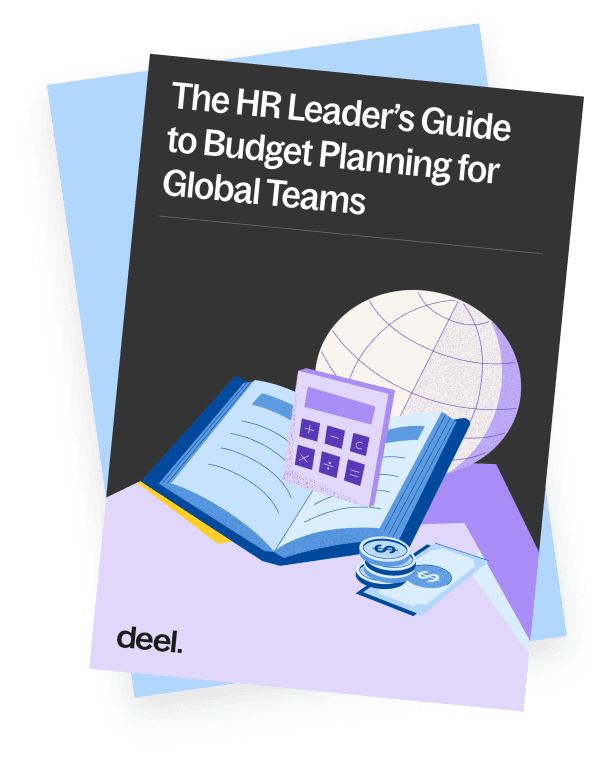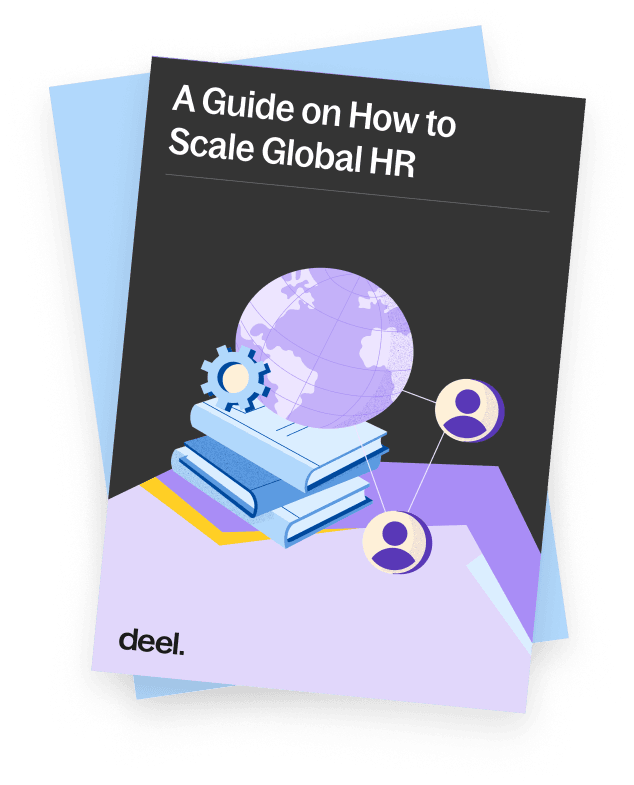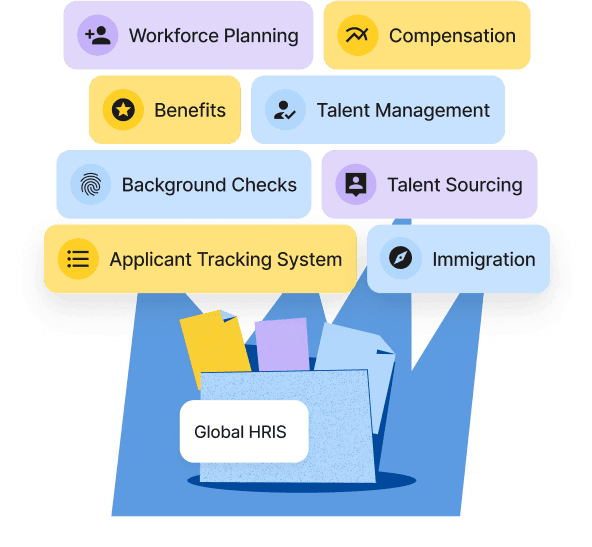Article
26 min read
What CEOs Get Wrong About HR, and How It Costs Them Growth
Global HR

Author
Lorelei Trisca
Last Update
November 04, 2025

Table of Contents
Misconception 1: HR is just admin, not a growth driver
Misconception 2: You can scale your company without investing in HR systems
Misconception 3: You can wait to formalize your people processes
Misconception 4: All attrition is bad (or equal)
Misconception 5: People strategy is separate from business strategy
The cost of inaction: How an underdeveloped HR function costs scaling organizations’ growth
Scale HR with Deel, your forever people platform
Key takeaways
- Sidelining HR holds businesses back. When the CEO views HR as purely operational, it becomes harder to scale the business effectively, build strong teams, or adapt to change without friction.
- Without the right HR infrastructure in place, people decisions become reactive. Over time, this slows execution and drains resources that should be spent driving momentum.
- Investing early gives you better signals and faster course correction. A connected HR platform provides 360-degree visibility, so your leadership team can make confident, informed decisions before problems escalate.
Most CEOs don’t wake up thinking about HR, and in the early stages, that’s often fine. Hiring is ad hoc, performance reviews happen over coffee, and spreadsheets get the job done. But the cracks begin to show as headcount grows past 100, then 200, then 300.
This article breaks down the common misconceptions that CEOs (and sometimes other members of the C-Suite) have about HR, and how they silently drain performance, waste budget, and slow your company’s trajectory.

Misconception 1: HR is just admin, not a growth driver
In many mid-sized companies, HR still carries the legacy of its earliest days—payroll, compliance, maybe a policy handbook saved to Dropbox. If that’s how the function started, it’s no surprise that some CEOs still see it as a support role, rather than a strategic opportunity.
But that mindset becomes expensive fast. As companies scale, people challenges become more complex. When CEOs treat HR like an internal service desk and leave it out of strategic planning, the business starts missing what matters. Every open vacancy throws off team momentum. And when there’s no structure to support managers or spot risks early, the organization ends up reacting to problems it could have prevented.
The cost shows up subtly at first: slower execution, less cohesion, decisions made without context. But over time, that drag adds up and starts pulling growth in the wrong direction, ultimately eating away at your culture and your margins.
Proximity is part of the problem. If HR isn’t included in strategic discussions, they’re often forced to operate independently and without insights into the key initiatives of your business.
Mike Coffey, longtime HR leader and host of the Good Morning HR podcast, describes:
“There are so many HR people that I’ve known over the years, who I say, ‘What does your company do?’ And they say, ‘Oh, we sell widgets.’… But they don’t know what customers use them for, or how they compete in the market. If they don’t understand how the business makes money, I don’t even understand how they can recruit the right people.”
The disconnect between business strategy and people strategy keeps HR stuck in a transactional lane that misses out on growth opportunities.
Deel HR
Misconception 2: You can scale your company without investing in HR systems
Scrappiness is almost a badge of honor in a company’s early days, when your HR lives in Notion, Google Sheets, and email chains. It works well enough when the team is small and moving fast. But as you grow beyond 100+ people, those makeshift systems can hardly keep up.
Running HR through shared docs creates invisible drag, such as slow decisions, missed signals, and patchy data. Without systems like an HRIS, ATS, or onboarding platform, your people team is forced to operate on the fly, chasing down answers manually instead of driving strategy.
Unfortunately, many CEOs still see formal HR systems as “nice-to-have,” drastically underfunding this business area. According to SHRM, companies spend only 0.74% of their revenue on HR, compared to finance (1.33%), IT (3.06%), marketing (5%), and sales (7.01%).
Despite being responsible for the systems that manage every employee in the business, HR receives the smallest slice of the operating budget pie, equating to $2,524 per employee annually, with recruiting, total rewards, and L&D making up the bulk.
This doesn’t make sense. CEOs wouldn’t be happy if their CFO lacked the technology to generate and present a basic forecast. So, why scrimp and save on your People team and force them to cobble data on attrition trends or benefits participation together by hand?
This approach is seriously risky for scaling companies. The longer you delay proper infrastructure, the more likely you are to miss the signals that matter, such as drops in engagement, patterns in churn, or early signs of misalignment. By the time these HR issues are flagged, they’re much harder and more expensive to fix.

Misconception 3: You can wait to formalize your people processes
Performance management systems, leveling frameworks, and compensation bands rarely feel urgent when you’re still growing fast and hiring on instinct. But waiting too long to formalize them isn’t a good long-term strategy.
Unstructured orgs might look efficient on the surface, with flat teams, fast decisions, and minimal processes. But under the hood, people don’t know what success looks like. Managers can’t coach effectively. Compensation feels arbitrary. And internal mobility stalls because there’s no clarity on how workers can progress within the organization.
You don’t necessarily need heavy software to get this right. Often, it’s about putting simple frameworks in place that are just structured enough to create a level of consistency and trust.
Example: A European shipping company had struggled with high absenteeism of its port-based security officers. After committing to a job redesign program, including structured task analysis, employee focus groups, and clearer role definitions, this led to a 6% drop in absenteeism and €350,000 in contractor savings.
By creating clarity around expectations and purpose, the company solved a costly operational problem.
Misconception 4: All attrition is bad (or equal)
CEOs often zero in on overall turnover rates, but raw percentages presented without HR’s wisdom and expertise don’t tell the full story. Not all attrition is regrettable, and not all exits are avoidable. The real questions are:
- Who’s leaving?
- Why are they leaving?
- Can we prevent it?
- What does it signal about leadership, culture, or role clarity?
Treating all departures the same dampens your understanding. For example, voluntary exits from high performers could be a key signal of risk, while involuntary exits from poor hires point to broken screening. Similarly, attrition in one department may reveal a management issue, but may reflect healthy evolution in another.
To reveal the truth of your attrition figures, strategic HR teams can segment data by role, tenure, manager, and performance, then tie those trends back to key upstream decisions related to hiring quality, onboarding consistency, and leadership capability.
Your turnover rate isn’t just an HR KPI. It’s a lagging indicator of operational health. Ignore the nuance, and you miss the chance to fix the root cause.
Misconception 5: People strategy is separate from business strategy
In companies where HR is still viewed as a tactical function, it’s easy to see “people work” as something adjacent to the real business, supporting it, rather than shaping it. For this reason, it’s common for HR teams to still report to Operations, even when headcount reaches 300+ workers.
But this type of poor org design and lack of succession planning directly slows down revenue growth. Meanwhile, workforce planning, internal mobility, and leadership development are core business levers.
As Bruce Waller, VP Corporate Relocation at the Armstrong Company, put it on the Good Morning HR podcast:
“If it doesn’t align with our business goals, it’s not the right problem. We’re focused on quality, safety, revenue, and profit. So if I’m trying to identify a way to help the organization, and it’s not tied to one of those four areas, it’s probably not going to get a lot of attention.”
The best HR leaders know this. They bring data, insight, and solutions to the executive table. They frame their requests to the CEO in terms of business priorities and offer paths forward.
People strategy is business strategy. If you fund it like a back-office function, expect back-office results. The sooner you can start strategizing, the sooner you’ll reap the rewards. As Casey Bailey, Head of People at Deel, reflects:
One of our biggest learnings from 2022 as an organization is that we should have encouraged investment in the HR function earlier—earlier than we would have thought—so the function could grow alongside and at pace with the business.
—Casey Bailey,
Head of People, Deel
The cost of inaction: How an underdeveloped HR function costs scaling organizations’ growth
The case for maturing your HR function is strong, regardless of your organization’s size or growth stage. But this isn’t yet the reality, with only 50% of CEOs viewing HR as a strategic partner to the business. Here’s one last reminder of the perils of applying the “wait and see” approach to your people processes.
Poor onboarding = Slower time-to-productivity
Suppose onboarding is inconsistent because you haven’t invested properly in your HR workflows. In that case, it can take your new hires longer to ramp up and reach productivity. During that time, your business isn’t receiving value for money, and equally, your new hires also feel the frustration of your clunky HR workflows.
Any type of dissatisfaction during the sensitive first few months could lead to their premature departure from the organization; some 29% have quit within the first 90 days, extending the period of lost productivity as the hiring cycle begins again.
I think it’s even more critical within remote onboarding, because delays in access, delays in tech provisioning, lack of clarity on process, that kind of burn for a new hire can go unnoticed for weeks. A strong onboarding program shortens time to impact, dials up productivity quickly, and helps retain the folks you’ve already said are worth hiring.
—Alice Burks,
Director of People Success, Deel
Low engagement = Higher attrition cost
People teams drowning in transactional HR tasks don’t have the bandwidth to improve worker engagement. When feedback, progression, and manager enablement are missing, morale drops, and so does retention. Again, the business case is clear.
According to SHRM, replacing an employee can cost between 50% and 200% of their annual salary, depending on their role and level of seniority.
Failed hires = Lost compounding value
Every failed hire creates ripple effects across teams as project progress is delayed and team morale is drained due to resources being stretched too thin. The effect is especially pronounced in organizations of 250+, where every leadership mishire filters down through at least three different layers of personnel.
At that scale, a single poor fit drags on velocity across functions. And when performance reviews, onboarding, and progression lack structure, it becomes harder to catch problems early or pinpoint root causes.
Manager churn = Execution gaps
We talk a lot about the importance of leadership and how their behavior shapes the experience for individual contributors. But often it’s those in the messy middle that burn out fastest. When managers feel unsupported by the company, and those above or below them, their exits create inability and lost institutional knowledge, which has an undeniable effect on their direct reports.
Some 33% of employees say their manager greatly impacts their engagement. When that anchor disappears, teams can lose confidence and a sense of direction. The disruption lingers as goals get deprioritized, relationships reset, and performance often dips before a new manager even arrives.
If you’re not actively supporting and developing your people managers, you’re gambling with execution. These are the roles that translate strategy into daily motion, and when they churn, so does momentum.

Scale HR with Deel, your forever people platform
The earlier you invest in your company’s HR function, the better. But if you’ve been papering over the cracks up until now, it’s not too late to scale your HR with Deel.
Deel’s all-in-one HR platform is built for lean teams with big plans. You only pay for what you use, and every module scales with you. No more duct-taped systems, messy spreadsheets, or tool sprawl. Just one clean infrastructure to grow your team, track performance, align compensation, and collaborate across functions, especially finance.
Deel’s HR Suite includes:
- HRIS: Access a centralized hub for all your global employee records, kept up to date in real-time
- Employee benefits: Offer competitive, localized benefits packages with zero admin overhead
- Talent sourcing: Tap into global talent pools and compliantly hire from over 100 countries
- Workforce planning: Model, budget, and plan headcount in lockstep with your finance team
- Compensation management: Build and manage structured, equitable pay bands across markets
- Talent management: Define role expectations and career progression, set goals and evaluate performance, create learning programs, all to motivate and retain your top talent
- Employee engagement: Run pulse surveys, track sentiment, and act on engagement trends before they escalate.
But the real advantage? Strategic visibility. With everything connected in one platform, People teams can collaborate with finance, flag early warning signs like churn or burnout, and present clean, real-time dashboards to leadership. This decision support helps your HR team speak the language of the C-suite: impact, cost, forecasting, and velocity.
Deel saves me 3-4 days every month on expenses alone, it’s a full day back. But here’s the real test: if we stopped using Deel tomorrow, we’d need to hire at least three people just to handle what it does today.
Instead of messy Excel sheets, we now have beautiful, live dashboards with clean graphs. Our founders love numbers, and Deel helps us present them in a way that actually tells a clear story.
—Izacco Scattolin Neto,
Senior Recruitment & HR Administrator
Ready to stop treating HR like a cost center? Deel gives CEOs and People leaders a shared system to see what’s coming, act sooner, and build the future of HR with intention. Get a free demo today.

Lorelei Trisca is a content marketing manager passionate about everything AI and the future of work. She is always on the hunt for the latest HR trends, fresh statistics, and academic and real-life best practices. She aims to spread the word about creating better employee experiences and helping others grow in their careers.















